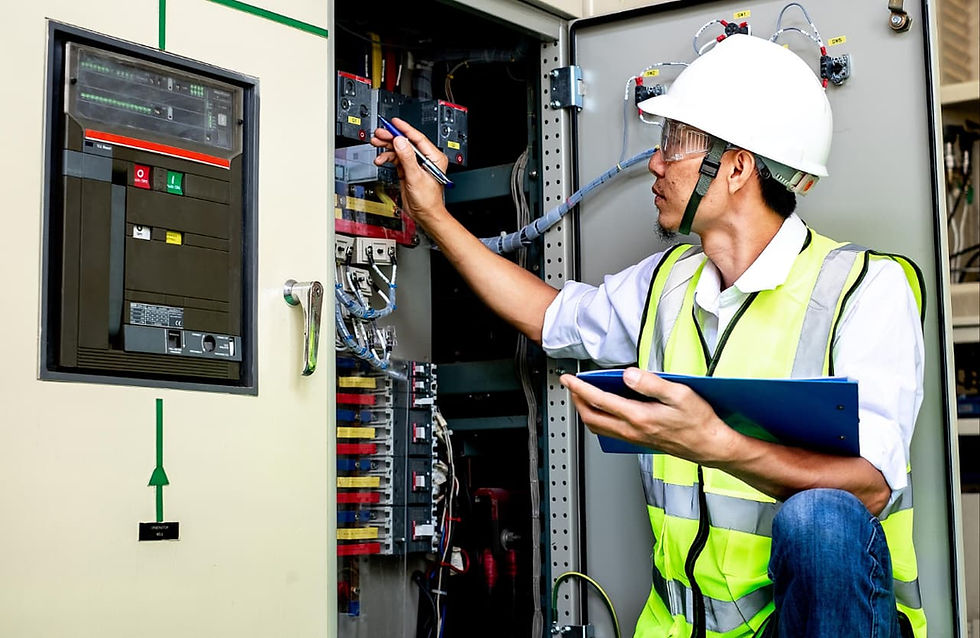Gas or Fuse Switchgear: Technical Differences and Advantages.
- Grupo Edmar

- Aug 21
- 4 min read
Updated: Aug 22
August 21, 2025 - Gas or Fuse Switchgear.
Gas or Fuse Switchgear: Technical Differences and Advantages.
In the electrical sector, choosing a switchgear may seem like a technical decision that only concerns specialized engineers, but in reality, it directly influences the safety, reliability, and cost of any installation. Two of the most commonly used options are the gas switchgear and the fuse disconnector . Although both perform the function of isolating and disconnecting circuits, their features and advantages make them suitable for very different situations.
In this article, we explain their differences and how to choose the one that best suits your project.
What is a Gas Switchgear?
A gas switchgear is a device designed to safely open or close an electrical circuit, isolating a portion of the installation to prevent the flow of current. The gas switchgear uses SF6 (sulfur hexafluoride) as an insulating medium. This gas is highly efficient at extinguishing electric arcs and provides a level of insulation far superior to air.
Most relevant features:
It can operate in tight spaces thanks to its compact design.
Maintains a high degree of safety even under extreme conditions.
It has a long service life , reducing the frequency of replacements.
It is suitable for medium and high voltage , from compact urban substations to large industrial plants.
It has a quiet and stable operation.
Example: In an urban Gas Switchgear where space is limited, a gas switchgear is ideal because it combines maximum safety into a compact design.

What is a Fuse Switchgear?
The fuse switchgear combines the isolation function with a fuse that automatically blows when an overcurrent or short circuit occurs. This makes it a device that not only allows disconnection but also protects the grid from further damage.
Most relevant features:
Low cost and easy installation.
Its maintenance is simple, as it is enough to replace the damaged fuse.
It is very common in medium voltage overhead distribution networks , due to its practicality.
Provides immediate protection against power failures.
It can be installed outdoors without complications.
Example: On a rural distribution line, fuse disconnectors are frequently used because they allow the network to be kept running economically and safely.
Key Technical Differences.
Although both are switchgears, their functions and capabilities have important differences:
Isolation medium:
Gas: Uses SF6 to extinguish electric arcs.
Fuse: depends on the fusion of the protective element.
Protection level:
Gas: insulates and disconnects, but does not protect against overcurrents.
Fuse: protects against short circuits and overloads at the same time.
Scope of application:
Gas: medium and high voltage projects where reliability is critical.
Fuse: medium voltage networks with moderate loads and tight budgets.
Cost and maintenance:
Gas: higher initial investment, but less maintenance.
Fuse: Low initial cost, but requires fuse replacement after failure.

Advantages of the Gas Switchgear.
The gas switchgear offers benefits that make it especially attractive for demanding installations:
High reliability: maintains network stability even under adverse conditions.
Compact design: ideal for urban areas or installations with limited space.
Less maintenance: thanks to the durability of SF6 gas.
Greater safety: reduces the risk of arc flash accidents.
Long service life: can exceed 20 years of operation with proper maintenance.
In projects where continuity of electrical service is essential , such as in hospitals, data centers or high-consumption industries, this option is the most appropriate.
Advantages of the Fuse Switchgear.
The fuse switchgear stands out for its simplicity and low cost:
Economical: reduced initial investment compared to other solutions.
Integrated protection: acts as a disconnector and protection device at the same time.
Easy replacement: Fuses can be quickly replaced after a fault.
Versatility: adapts very well to overhead distribution networks.
Availability: Its technology is widely known and used, so spare parts are easy to obtain.
It is an excellent choice for medium voltage lines in residential, rural or light industrial areas , where cost and simplicity are key factors.

When to choose one over the other?
The answer depends on several factors:
If you're looking for maximum reliability and safety, the gas switchgear is the best option.
If you're looking for economy and practicality in medium-voltage networks, a fuse switchgear is more suitable.
The important thing is to analyze the nature of your installation , the voltage level and the need for additional protection.
Considerations before purchasing.
Before purchasing either of the two, it is essential to be clear:
The voltage level of the installation.
The type of network and work environment.
The availability of maintenance or replacements.
The budget and the projection of use.
At Grupo Edmar, we know that every installation presents unique challenges. Although we don't technically define the exact switchgear your project requires, we can help you evaluate options so you can make the right decision. Our commitment is to ensure you acquire equipment that balances safety, efficiency, and cost .
If you'd like to learn more about transformers, switchgears, and other electrical equipment, remember to visit our Edmar Group blog.




Comments